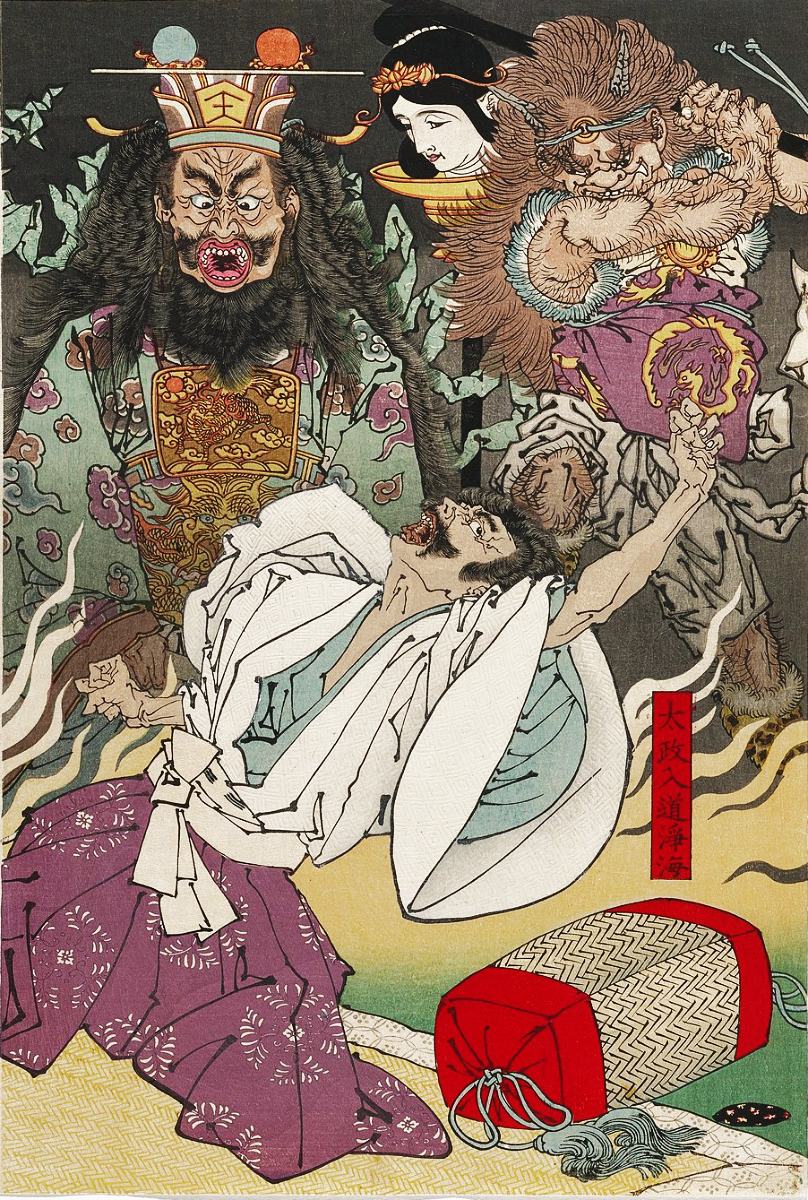Taira no Kiyomori (1118 – March 20, 1181) was a military leader and kugyō of the late Heian period of Japan. He established the first samurai-dominated administrative government in the history of Japan. In 1156, he and Minamoto no Yoshitomo, head of the Minamoto clan, suppressed the rebels in the Hōgen Rebellion. This established the Taira and Minamoto as the top samurai clans in Kyoto. However, this caused the allies to become bitter rivals which culminated four years later during the Heiji Rebellion in 1160. Kiyomori, emerging victorious with Yoshitomo (whose two eldest sons were killed), was now the head of the single most powerful warrior clan in imperial capital Kyoto. With the exertion of Taira power and wealth and Kiyomori’s new monopoly on authority, many of his allies, most of the provincial samurai, and even members of his own clan turned against him. Prince Mochihito, brother of Emperor Takakura, called on Kiyomori’s old rivals of the Minamoto clan to rise against the Taira, beginning the Genpei War in the middle of 1180. Kiyomori died early the next year from sickness, leaving his son Munemori to preside over the downfall and destruction of the Taira at the hands of the Minamoto in 1185. The Tale of the Heike states that as he lay dying, Kiyomori’s fever was so high that anyone who attempted to even get near him would be burned by the heat.
| Alias Taira no Kiyomori (平 清盛) |
| Real Names/Alt Names Taira no Kiyomori (平 清盛) |
| Characteristics Villain, Samurai, Historical Figures, Medieval Age, Japanese |
| Creators/Key Contributors Tsukioka Yoshitoshi, ○ |
| First Appearance Historical figure (b. 1118 – d. 1181) |
| First Publisher ○ |
| Appearance List Tale of the Heike (Heike monogatari, 1190–1221); The Heike Monogatari (1918–1921) by A. L. Sadler (trans.) — serialized complete translation in Transactions of the Asiatic Society of Japan; The Ten Foot Square Hut and Tales of the Heike (1928) by A. L. Sadler (trans.) — selections from Heike; The Heike Story (1956) by Eiji Yoshikawa; trans. Fuki Wooyenaka Uramatsu; A History of Japan to 1334 (1958) by George Sansom; The Tale of the Heike (University of Tokyo Press, 1975) by Hiroshi Kitagawa & Bruce T. Tsuchida (trans.); The Future and the Past: A Translation and Study of the Gukanshō (1979) by Jien; ed./trans. Delmer M. Brown & Ichirō Ishida. Film: Shin Heike Monogatari (New Tales of the Taira Clan, 1955) by Kenji Mizoguchi (dir.). |
| Sample Read A History of Japan to 1334 by G.B. Sansom [Internet Archive] |
| Description Taira no Kiyomori (1118 – March 20, 1181) was a military leader and kugyō of the late Heian period of Japan. He established the first samurai-dominated administrative government in the history of Japan. In 1156, he and Minamoto no Yoshitomo, head of the Minamoto clan, suppressed the rebels in the Hōgen Rebellion. This established the Taira and Minamoto as the top samurai clans in Kyoto. However, this caused the allies to become bitter rivals which culminated four years later during the Heiji Rebellion in 1160. Kiyomori, emerging victorious with Yoshitomo (whose two eldest sons were killed), was now the head of the single most powerful warrior clan in imperial capital Kyoto. With the exertion of Taira power and wealth and Kiyomori’s new monopoly on authority, many of his allies, most of the provincial samurai, and even members of his own clan turned against him. Prince Mochihito, brother of Emperor Takakura, called on Kiyomori’s old rivals of the Minamoto clan to rise against the Taira, beginning the Genpei War in the middle of 1180. Kiyomori died early the next year from sickness, leaving his son Munemori to preside over the downfall and destruction of the Taira at the hands of the Minamoto in 1185. The Tale of the Heike states that as he lay dying, Kiyomori’s fever was so high that anyone who attempted to even get near him would be burned by the heat. |
| Source Taira no Kiyomori – Wikipedia |

